BELGIUM
History

History

Cities in BELGIUM
| Antwerp | Bruges | Brussels |
| Ghent |
History
Prehistory
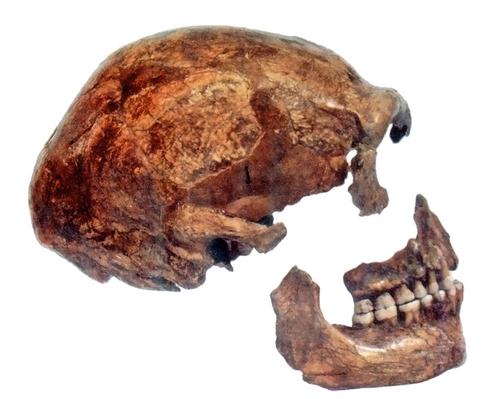 Skull Prehistory BelgiumPhoto: We El CC 3.0 Unported no changes made
Skull Prehistory BelgiumPhoto: We El CC 3.0 Unported no changes made
Archaeological finds prove that long before the agricultural Neolithic, northwestern Europe was inhabited by the so-called Neanderthals. Flint tools of hunters and fishermen date from about 500,000 BC. Late Paleolithic flint industries and Weichselian skeletons have also been found in various locations. In the Neolithic (c. 4000 BC) the first agricultural villages with about 100 inhabitants appeared. From 3500 to 2000 BC. lived in the Kempen, the Leem region and the Meuse valley cultures of the Middle Neolithic.
In the Middle Bronze Age from about 1500 to 1100 BC. was established in Flanders and the Kempen, among others, the Famenne group. The different other groups are distinguished on the basis of different grave shapes. During the Iron Age, Hallstatt culture (700-500 BC) and Celtic La Tène culture were the most important. During this time some fortified market and trading places and hill fortifications also arose. Moreover, a distinction was made between warriors and the common people, probably under the influence of invading Celts.
The Roman period
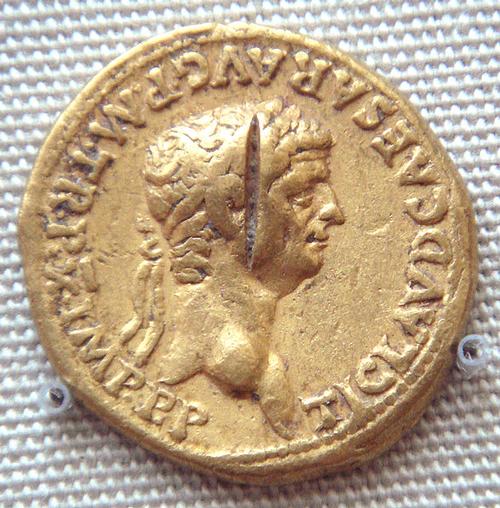 Coin of Claudius BelgiumPhoto: Uploadalt CC 3.0 Unported no changes made
Coin of Claudius BelgiumPhoto: Uploadalt CC 3.0 Unported no changes made
The Celtic Belgae, so called by the Romans, were built from 57 to 51 BC. subdued by Caesar and their territory was annexed as part of Gallia.
Under Emperor Augustus, Belgica (so called since 16-13 BC) became an administratively independent province of the Roman Empire. Until the first century, resistance to Roman civilization was strong in the Celtic regions. Only under Emperor Claudius did the actual romanization occur, but at the same time it was possible to preserve the social structures. Cultural conversion was also aided by the construction of a number of major roads and auxiliaries for the Roman army to supply the subjugated peoples.
Furthermore, the Roman colonies in Trier and Cologne became markets for the products of North Gaul agriculture and indigenous crafts. Some large farms (villae) even arose and places like Tongeren and Tournai got an urban character. Smaller villages and communities (vici) also flourished and trade with Italy and the rest of Gallia intensified. Fishing villages and salt extraction companies were established on the coast, in the west of Belgium. The textile industry also developed strongly and large herds of sheep were kept for wool. Other economic activities included logging, coal fires, iron, zinc and limestone mining.
From 256 Frankish warriors crossed the Rhine and all Gallia was looted and many towns and villages were destroyed. Around 280 the invaders were driven out, but a tribe, the Salians continued to invade the Belgian areas. Eventually around 296 an alliance was made between the Romans and this Frankish tribe and they were appointed as defenders of the national border between Nijmegen and the sea.
From about 297, Belgica was split by Emperor Diocletian into Belgica Prim in the southeast and Belgica Secunda in the west. Germania Inferior, located in the northeast, was already detached from Belgica at the end of the first century.
The Merovingian and Carolingian Period
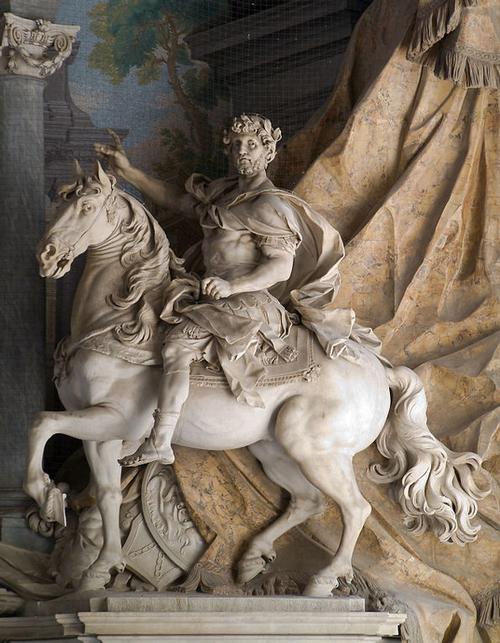 Charles the Great BelgiumPhoto: Myrabella CC 3.0 Unported no changes made
Charles the Great BelgiumPhoto: Myrabella CC 3.0 Unported no changes made
The authority vacuum that emerged in North Gaul was seized by the Salian Franks to descend further south and made Tournai the capital of their new empire. One of the most important families was the Merovingians with, among others, Chlodovech I, who laid the foundation of the Frankish empire from Tournai. His main successors, Chlotarius and Dagobert, brought further unity to the Frankish empire.
In 639, however, the empire was divided into Austrasia and Neustria, the border of which ran through present-day Belgium. However, the power of the kings visibly diminished as the mayors, the administrators of the royal goods, began to strengthen their position of power. In 719, Charles Martel was proclaimed a court mayor of the entire Frankish empire, and even managed to expand the territory. After the death of King Theodoric IV, Martel exercised royal power in his own name.
In 751 the last Merovingian monarch was deposed and the Carolingian dynasty settled. The most important prince became Charlemagne, who became emperor of a Christian European unity kingdom in 800. The power and wealth of the Roman Catholic Church also increased sharply. Under the rule of Charlemagne and his successor Louis the Pious (814-840), peace and peace reigned in this area and the (agricultural) economy flourished.
The post-Carolingian period and the medieval principalities
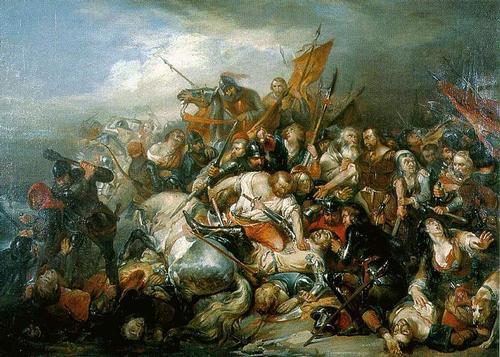
After the death of Louis the Pious in 840, the unity in the Frankish empire disappeared and the Treaty of Verdun in 843 divided the empire into three parts:
Francia Occidentalis or West Francia, Francia Media or Middle Francia and Francia Orientalis or East Francia. The western part of present-day Belgium belonged to West Francia, the eastern part to Central Francia and the Scheldt formed the boundary between the two parts. The northern part of Central Francia was later named Lorraine and was divided into Lower Lorraine and Upper Lorraine in the second half of the 10th century. The eastern part of present-day Belgium belonged to Lower Lorraine.
From the end of the ninth century, the king lost absolute power in West Francia (now: France). The Normans' raids and the decline of central authority further intensified this process. A few so-called shafts, in fact civil servants, saw their chance and started to exercise authority in their own name. During this time the foundations of the Duchy of Brabant, the County of Hainaut and the County of Flanders were also laid. Flanders then had to deal with French centralization politics for centuries, but managed to retain its independence. The Golden Spurs Battle in 1302 became famous during this time.
Other principalities of Lorraine were Limburg, Loon, Luxembourg, Namur and Bouillon, which were incorporated in a larger context from the fourteenth century. The Principality of Liège remained independent until the French Revolution.
From about 1050, a period of economic growth started for the backward, agricultural and depopulated regions that formed today's Belgium. As a result, population growth also increased sharply and it was also possible to engage in trade and industry, which in turn stimulated the rise of the cities. The cloth industry in Flanders, the export of natural stone and the first coal were extracted in Liège in 1195. The countless annual markets created a lot of trade, which even attracted foreign merchants. At one point, merchants from the same city united in a "hanze" who later joined together and became increasingly powerful. This is how the Flemish Hanseatic League of London traded on England and Scotland, and the Hanseatic League of XVII cities, which traded on Italy.
From the middle of the fourteenth century, Europe was hit by an economic depression and the plague or "black death" caused the eradication of one third of the European population. Fortunately, the regions of present-day Belgium were less affected by the economic depression. For example, the first blast furnaces appeared in Liège, which greatly increased iron production, and Bruges remained an important trading city until the late 15th century.
The Burgundian period
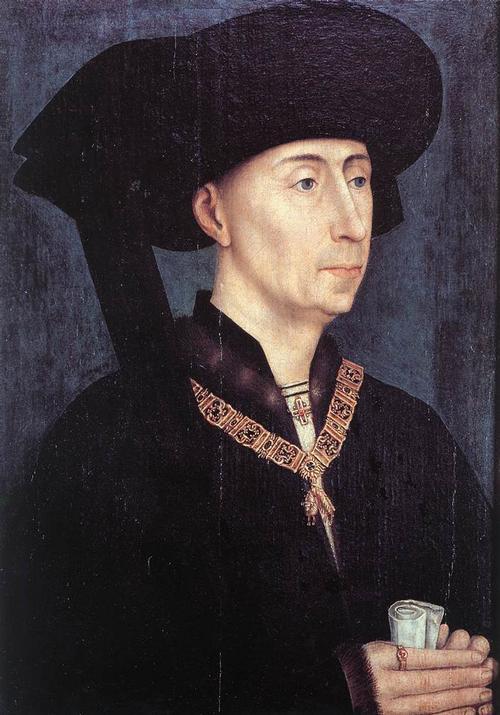
After the death in 1384 of Louis of Male, Count of Flanders, the House of Burgundy entered the history of the Netherlands. Louis's successor was Margaret of Male, who in 1369 was married to Philip de Stioute, Duke of Burgundy. Under his rule, most principalities that make up present-day Belgium were included in the Burgundian regions, which were later referred to as the Southern Netherlands.
His grandson Philip the Good became Duke of Brabant-Limburg in 1430 and forced Jacoba of Bavaria to surrender her counties Holland-Zeeland-Hainaut in 1433. In 1451, Philip also became Duke of Luxembourg and succeeded in uniting all these areas into a personal union. His son and successor Karel de Stoute tried unsuccessfully to conquer Alsace-Lorraine in order to connect the Dutch regions.
The marriage of his daughter Mary of Burgundy to Maximilian of Austria prevented France from attacking the Netherlands for the time being and also ensured that the House of Habsburg was brought into the Burgundian inheritance. Until 1494 Maximilian held the regency for his son Philip the Fair. Philip the Fair would also be the last monarch to conduct a personal government over the Netherlands from 1494-1506.
A number of central institutions managed the areas in Burgundian times. The chancellor was the central figure in the government and also chairman of the Court. A number of specialized institutions emerged from this Court: the Great Council for the Judiciary, the Court of Auditors for Finance and the Secret Council for Political Policy. Nobility, the clergy and the cities were represented in the regional States. In 1464 the first joint meeting, the States General, took place, which was mainly concerned with political problems. At that time, regional government bodies such as the Council of Flanders, the Council of Brabant and audit offices in Lille and Brussels also emerged.
The economic history of the Burgundians was strongly influenced by the political events of the time. For example, international trade suffered greatly from the Hundred Years' War between France and England, which started in 1337. From the fifteenth century, the political and therefore economic center of gravity shifted from Flanders to Brabant. At the end of the fifteenth century, Antwerp became the headquarters of the Portuguese spice trade in northwestern Europe.
The origin of the Seventeen Provinces
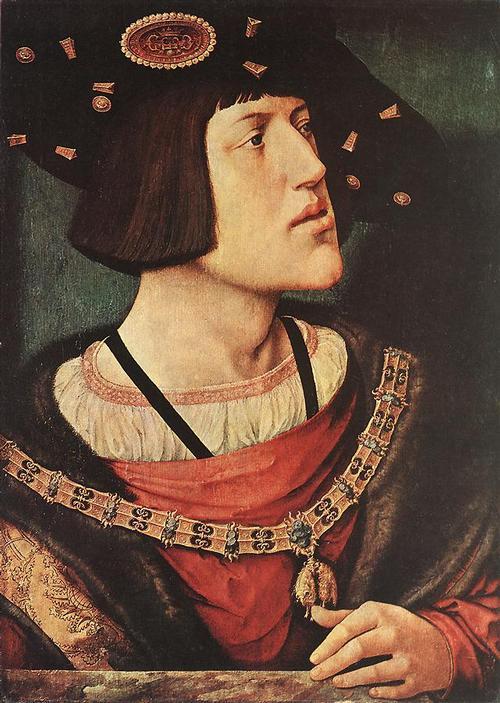
Since the death of Philip the Fair in 1506, the Northern and Southern Netherlands have been an integral part of the heritage of the Habsburgs, and the kings and emperors of Habsburg have been represented by governors, including the famous Margaret of Austria. She soon had problems with the States General, but from 1517 she regained control of the Netherlands.
In that year Charles of Luxembourg, later Charles V, left for Spain and turned the board over to the Grand Council, which also included Margaret. Charles V managed to put an end to the feudal lordship of France over Flanders, Artesia and Tournai. After the death of Margaret in 1530, Charles V was very committed to the unification of the Netherlands. This took shape in 1549 through the so-called Pragmatic Sanction. The government of the Netherlands came into the hands of governor Maria of Hungary and the Council of State.
The rebellion against the Spanish regime of Philip II
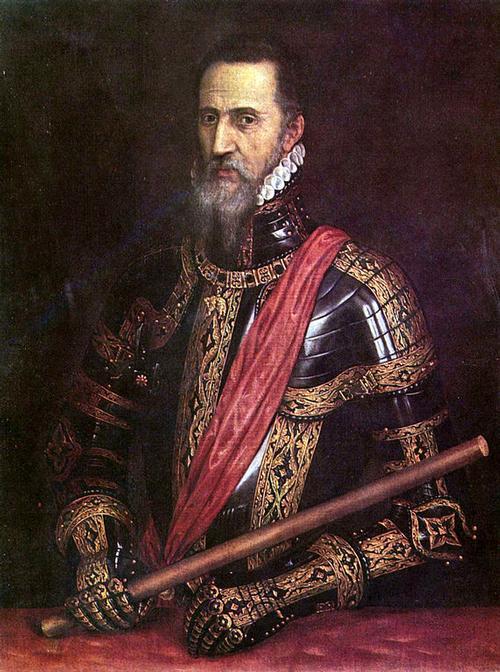
In 1555, Charles V was succeeded by the absolute monarch Philip II. This absolutism met with much opposition from the high nobility in the Netherlands. In addition, Protestantism emerged in the Netherlands in the early sixteenth century. From 1522, a strict repressive policy arose from, among other things, the state acquisition. However, all this did not lead to the restriction of Protestantism, and in 1565 an oath of alliance was established, many of whose members adhered to the Reformation or religious freedom. The Iconoclasm took place in 1566 and then the measure was full for Philip. Governor Margaret of Parma was replaced by the Duke of Alva, who led a very strict and bloody regime.
The opposition to this was led by William of Orange, who had initially fled the Netherlands but unleashed the Eighty Years' War from 1568. This war in the Northern and Southern Netherlands had a mixed course, which was strongly related to the attitude of Western powers such as England and France. Ultimately, the Northern Netherlands managed to achieve independence in 1648.
The Spanish troops operated from the Southern Netherlands, which suffered greatly as a result. In 1576 Governor Requesens, the successor of Alva, died and on the initiative of the States of Brabant, the Pacification of Ghent was concluded that same year, guaranteeing freedom of religion. However, the insurgents did not abide by this and in response the Catholics turned away from them and united in 1575 in the Union of Arras with Philip II. The Duke of Parma, Farnese, then subjugated almost all of Flanders and much of Brabant. Many areas were recaptured and Catholicism became the state religion while Protestantism practically disappeared from the map.
Under Spanish rule
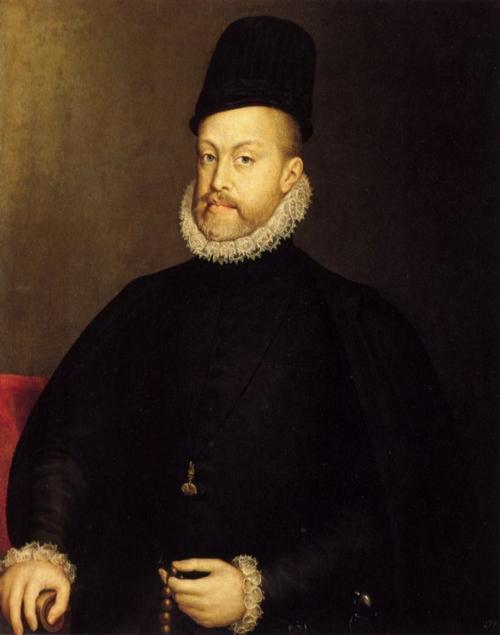
Shortly before his death, Philip II gave up sovereignty over the Netherlands to his daughter Isabella and her husband Albrecht of Austria. In the end it only succeeded to rule the Southern Netherlands. Albrecht started negotiations with the Northern Republic of the United Netherlands, which led to the Twelve Years' Truce in 1609, effectively recognizing the independence of the Republic. Albrecht died in 1621 and immediately the Southern Netherlands returned under Spain and the war resumed. This war did not end until the Treaty of Munster in 1648, when the Southern Netherlands had to give up North Brabant, Zeelandic Flanders and a large part of the Countries of Overmaze.
Since 1635, the Southern Netherlands were also regularly at war with France and this battle was fought mainly on "Belgian" territory. Part of Hainaut and Flanders was lost, but total annexation by the French could be prevented with the help of the Republic and England.
Economically, the war was disastrous for the Southern Netherlands. Antwerp lost its status as an international commercial center and the countryside also suffered from looting, famine and plague. Only with the appointment of Isabella and Albrecht did the economic tide turn somewhat again, but in the second half of the 17th century the declining trend started again due to falling agricultural prices. At the end of the 17th century, an economic low was reached by constant war violence and the population was again hit by severe famine.
Under Austrian rule
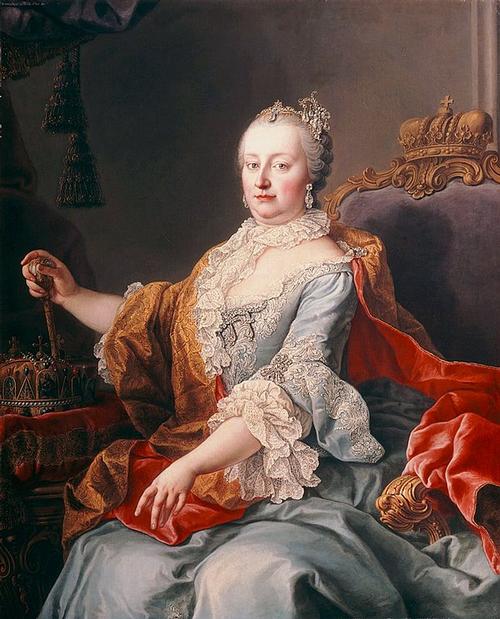 Maria Theresia BelgiumPhoto: Public domain
Maria Theresia BelgiumPhoto: Public domain
After the Treaty of Utrecht in 1713, the Southern Netherlands were assigned to the Austrian emperor Charles VI. He was represented by a governor-general and the daily management was in the hands of a minister plenipotentiary. Initially, this was the Marquis of Prié who soon came into conflict with the guilds and nobles.
After the death of Charles VI, the War of the Austrian Succession broke out and it was again fought on South Netherlands territory. He was succeeded by his daughter Maria Theresia who, after the Treaty of Aachen in 1748, was able to rule the Southern Netherlands. However, she also had this done again by a governor-general, including Karel van Lotharingen, and a minister plenipotentiary, including the count of Cobenzl. Cobenzl caused a cultural and especially economic revival. He reformed the finances and managed to strengthen the central power of Brussels.
This centralist and absolutist policy was continued even more vigorously by Maria Therese's son, Joseph II. The administrative system and the court were also modernized by him in 1787. This met with a lot of resistance in all layers of the population, which ultimately led to the Brabant Revolution of 1789, after which the States General proclaimed in 1790 the independence of the so-called “United Belgian States”, a federation with few powers for the umbrella congress. . Moreover, the covenant was plagued by divided factions and regional particularism.
In 1792, the French invaded the Southern Netherlands and managed to occupy the entire country, including the Prince-Bishopric of Liège. In 1793, however, they suffered such a defeat at Neerwinden that they had to withdraw. On June 26, 1794, the French managed to gain a final victory at the Battle of Fleurus.
The annexation to France
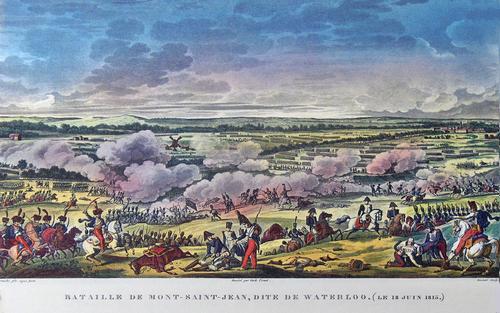 Battle of Waterloo BelgiumPhoto: JoJan CC 3.0 Unported no changes made
Battle of Waterloo BelgiumPhoto: JoJan CC 3.0 Unported no changes made
Immediately after this victory by the French, the reforms of the French Revolution were gradually introduced and the ancien régime, the old social and political order, was abolished. On October 1, 1795, the Southern Netherlands were incorporated into the French Republic as Belgian departments. Church persecution and conscription caused rebellions in 1798.
Peace only came with the consulate of Napoleon I Bonaparte and the concordat that the Pope concluded with Napoleon. During the French period, the industrial revolution that arose in England developed. The textile industry was mechanized, a military industry was created that supplied the French army and modern factories were built. The population rebelled against conscription and heavy taxes.
The Frenchification process in Flanders was accelerated by the introduction of French as the official language. It was therefore not surprising that at the Battle of Waterloo Belgians fought with and against Napoleon; Napoleon Bonaparte eventually suffered his final defeat at Waterloo in 1815.
The United Kingdom of the Netherlands and the Belgian Revolution
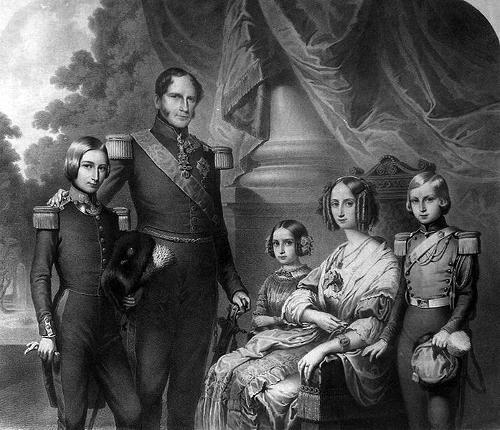
On June 21, 1814, the great powers signed the "Eight Articles of London," deciding to reunite the northern and southern Netherlands. This happened on the initiative of England, which wanted to form a strong buffer state against France after the collapse of the French Empire. In July of that year, the articles were accepted by William I, and on September 21, 1815, he took the constitutional oath as "King of the Netherlands."
Willem I's policy ensured a further economic and industrial development of the Belgian regions. Unfortunately, the common man did not take advantage of this. Illiteracy was tackled by the expansion of primary education and efforts were made to make Dutch the official language in Flanders. However, the Catholics strongly opposed the king's educational policy and a real school struggle ensued. After 1825, liberals and Catholics joined together, and in 1828 the Union of the Catholic and Liberal Opposition was formed (Unionism).
Due to the bad economic situation and the French July revolution, riots broke out in Brussels on August 25, 1830. This eventually led to the separation of the southern provinces and the creation of the Kingdom of Belgium. This event is also known as the Belgian Revolution. The Provisional Government declared independence on October 4, 1830. On November 3, a select group of people elected the National Congress that approved the Constitution on February 7, 1831.
After a conference on November 4 in London, the great powers on December 20, 1830 recognized the separation between the Netherlands and Belgium. On February 3, 1831, the Duke of Nemours, the second son of the French king, was elected "King of the Belgians". However, he declined and on February 24, Surlet de Chokier, the president of the National Congress, was appointed regent. On June 4, 1831, Leopold of Saxe-Coburg-Cotha was elected head of state by Congress, and on July 21, he took the oath as the first king of the Belgians.
After the revolution of 1830, it was thought in certain circles that the young Belgian state needed colonies to acquire insured outlets for its industrial production. These thoughts were mainly shared by King Leopold I, who financed travel and business from his own resources, but always failed.
Until the First World War
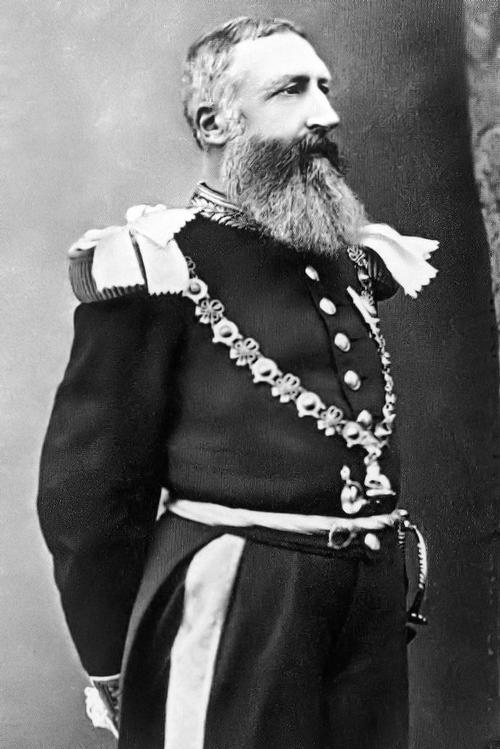
After independence, Unionism came under pressure from the recurring philosophical contradictions. For example, the Catholics no longer wanted to cooperate with the liberals after a condemnation from Rome of the liberal character of Catholicism. The Liberals, for their part, rejected Unionism because they feared that the Church would have too great an impact on public life. However, Unionism continued to exist through the intervention of King Leopold I and the Catholics. In Unionism they saw the best guarantee for a combination of their own authority and ecclesiastical interests.
Nevertheless, Unionism came to an end with the emergence of the Liberal Party in 1846, which came to power immediately after the elections of 1847. Immediately the contradictions between liberals and Catholics resurfaced, and education policy was again a source of unrest with the flaring up of the school struggle around 1880, which ultimately benefited Catholics. Catholics won elections in 1884 and remained in power for thirty years.
Economically, Belgium changed quite quickly from an agricultural state to an industrial state with mining and metal industry as important sectors. The construction of a railway network from 1834 also provided economic impulses. Foreign trade was stimulated and banking and insurance boomed. However, economic liberalism also caused poverty and miserable living conditions that resulted in a number of Belgian Workers' Party (1885) consisting of socialist groups, which organized strikes and rebellions. This attention to the social conditions of the workers led to a number of social laws and the introduction of universal multiple suffrage for men from the age of 25 in 1893. Liberals in particular suffered greatly from this development.
A new electoral system meant a drop in the number of seats from 61 in 1892 to 20 in 1894. From around 1860, the Flemish Movement ensured that the Frenchification of Flanders was put on the political map. Language legislation resulted in the Equality Act in 1898. Regarding foreign and military policy, Belgium has maintained neutrality since 1831. Personal conscription was introduced in 1909 and general conscription in 1913. This reform came too late to have any effect when on August 2, 1914, Belgium was involved in World War I by a German ultimatum.
King Leopold II, like Leopold I, was an ardent advocate of expansion abroad. Following the tours of Livingstone and Stanley, he founded the Association Internationale Africaine in 1876. However, he got few supporters and then hired Stanley. This would undertake an expedition to the Congo River, funded by the Association Internationale du Congo. Stanley, meanwhile, had already signed an agreement with 450 chieftains who had surrendered sovereignty over their territories. The Association Act was recognized as a sovereign state by the Berlin Act of 1885. In April, Leopold was allowed to act as the head of state of the Independent Congo State and even received financial support from Parliament. In 1890, more areas were conquered and both Houses granted a new loan. The condition was that Belgium could take over the Congo State if the Association failed to repay the loan. Leopold wanted to monopolize the rubber and ivory exploitation and thus opposed the Berlin Act, which advocated free trade. Many protests followed, resulting in a division into a crown domain (for the Congo State), a free trade zone and an area closed to trade. The planned takeover of the Congo State by Belgium fell through in 1901. In 1904, an international commission of inquiry was set up by Leopold to report all abuses. After the report was published on June 3, 1906, Leopold announced that he was ready for a transfer of sovereignty, except for the crown domain. The deed of renunciation was signed on November 28, 1907 and on November 15, 1908, the Congo State became a colony of Belgium under the new name Belgian Congo. The claims of the crown domain were reversed after Leopold's death in 1909.
First World War
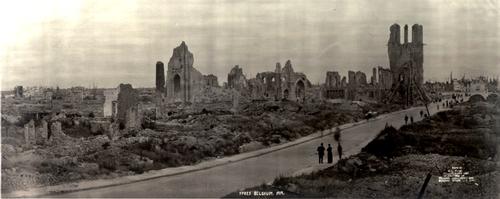 World War I Ypres BelgiumPhoto: Public domain
World War I Ypres BelgiumPhoto: Public domain
World War I started on August 4, 1914 with the invasion of Belgium by Germany. The Belgians only managed to slow down the advance of the Germans, but already in October the Belgian army had to withdraw behind the river IJzer in the southwest of Belgium. King Albert stayed in Belgium, but the government withdrew to Le Havre, France. There was little evidence of real resistance, but the number of people (the so-called activists) who cooperated with the German occupiers was also small. The liberation offensive started at the end of September 1918, after which the armistice was concluded on 11 November. Under the Treaty of Versailles in 1919, Belgium's neutrality was abolished, it was allowed to exercise a mandate over Rwanda-Urundi and annexed the German territories of Eupen, Malmédy and Sankt Vith, the so-called Eastern Cantons.
Between the two world wars
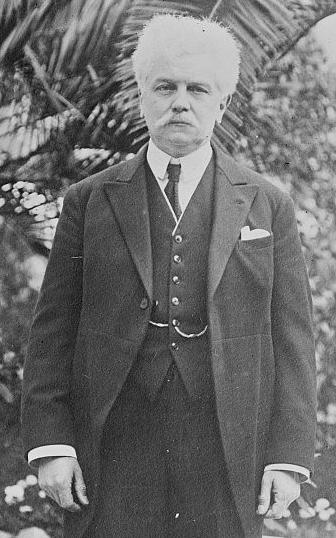 Henri Jaspar BelgiumPhoto: Public domain
Henri Jaspar BelgiumPhoto: Public domain
After 1918, despite the lack of a total vision of colonialism, important innovations were introduced in the colonies, making Belgian Congo one of the most exemplary African colonies with forms of indirect government, social and medical facilities and primary education.
The single universal suffrage was introduced in 1919, which would only apply to men until 1949. People now almost always had to rely on coalition governments and in the period of reconstruction after the First World War to the beginning of the Second World War, the three so-called national parties, the Catholics, the Socialists and the Liberals, often collaborated. In all other cabinets up to World War II, Catholics participated with either the Liberals or the Socialists as partners.
Other parties that manifested themselves in the interwar period were the Flemish National Union (VNV), which increasingly tended to fascism and national socialism, and the Communist Party of Belgium (CPB: now KPB).
The recovery of the economy only started again after 1925. Until then, the continued loss of the franc's value in particular caused an economic downturn. The Jaspar cabinet (1926-1927) devalued the franc and this depreciation of currency gave strong impetus to trade and industry. Unfortunately, this economic boom soon came to an end after the world crisis in the 1930s. The economy only recovered after a new devaluation of the franc in 1935. In the years between the two world wars, social legislation was also addressed, which resulted in strike law (1921), an eight-hour working day (1921) and minimum wages (1936). In 1925, Belgium joined the Locarno Conventions, incorporating it into a broader collective security system. After Germany canceled the treaties, Belgium returned to a neutrality policy. Even now, however, it could not be prevented that Belgium entered a subsequent world war.
The second World War
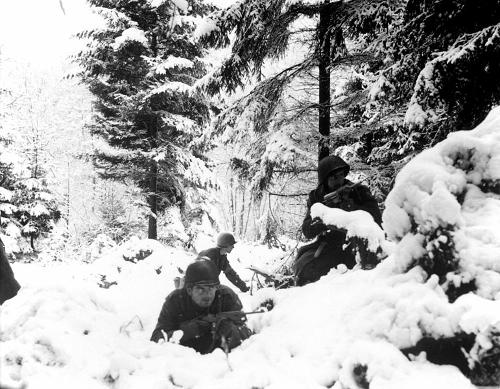 Battle of the Bulge BelgiumPhoto: Public domain
Battle of the Bulge BelgiumPhoto: Public domain
On May 10, 1940, the German troops invaded Belgium without a declaration of war, and on May 28, Belgium capitulated. King Leopold III stayed in Belgium, but the ministerial team fled to France and later to London. The fully occupied Belgium meanwhile got a military administration. After an initial hesitant start, the resistance movement that started from the beginning quickly expanded after the winter of 1941.
The Belgian economy was deployed by the Germans in warfare and a compulsory labor service was introduced. Naturally, the VNV belonged to the collaborating parties, but worse were the strongly pro-German Flemish SS and DeVlag. After the Allied breakthrough from Normandy, Brussels was liberated on September 2, 1944 and a few weeks later practically all of Belgium. After the Battle of the Bulge, Belgium was again a free country.
Period 1945-1970
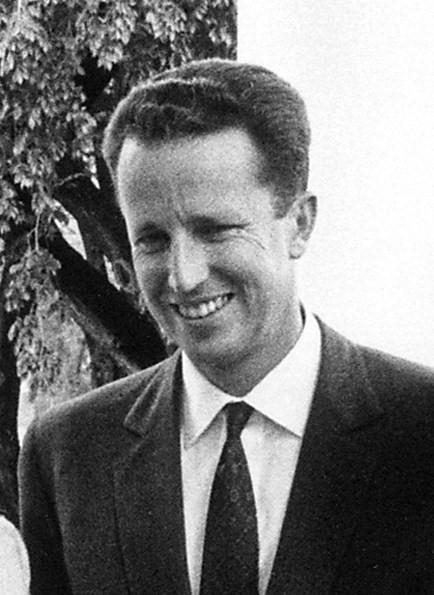 King Boudewijn BelgiumPhoto: Public domain
King Boudewijn BelgiumPhoto: Public domain
After the Second World War, all major parties changed their name. The Catholic Party became the Christian People's Party (CVP), the BWP became the Belgian Social Party (BSP), and the Liberals transformed their party into the Party for Freedom and Progress (PVV) in 1961. Flemish nationalism returned to politics in 1954 through the Volksunie (VU). In the 1980s, "green" parties such as Agalev and Ecolo entered parliament and the far-right Vlaams Blok.
After the Second World War, two national union governments were first formed. After 1946, many coalition governments followed with varying compositions and the occasional one-party cabinet under the CVP.
After the Second World War, the philosophical contradictions quickly arose again and the controversial attitude and possible return of Leopold III as king also led to major conflicts between the parties. Add to this the constant Flemish-Walloon contradictions and all this brought Belgium to the brink of civil war. This could only be prevented by the abdication of Leopold III in 1951 for the benefit of his son Boudewijn.
Economically, Belgium was able to recover quickly from the war by, among other things, the Marshall Plan, the Benelux and other European connections, the 1944 coin restructuring and the revival of coal production and the relatively intact industrial infrastructure. The school struggle flared up again when the socialist-liberal cabinet Van Acker canceled the large subsidy of free (Catholic) education. In 1958 the School Pact was concluded by the three national parties, as a result of which the turmoil in the educational world returned. Despite economic progress, many people remained unemployed and only improved from 1959 onwards after the passed Regional Expansion Act. Economic economies of scale, especially as a result of the entry into force of the European Economic Community, led to a period of economic boom from 1960 onwards. A second regional expansion law was enacted in 1966, marking a new boom period.
After the Second World War, the idea of independence in the Belgian Congo took on an increasingly clear form. Unrest in Leopoldstad forced the Belgian government to recognize the right of the Belgian Congo to independence (January 13, 1959). Without significant opposition from the government, the Belgian Congo became an independent state on June 30, 1960. Immediately there were disturbances that forced Belgium to make a military intervention.
After the First World War, the mandate given to two provinces of German East Africa, Urundi and Rwanda, expired on 1 July 1962 and the area was split into the independent states of Rwanda and Burundi. In the foreign field, the Benelux was gradually put into operation and Belgium joined various international organizations such as the Western European Union, NATO and the European Coal and Steel Community (ECSC).
The Flemish Movement recovered somewhat after the end of the school struggle and afterwards the Flemish-Walloon relations were tackled again. For example, the language border was established in 1962 and the language legislation was revised in 1963. The idea of the federation also re-emerged, despite major reservations from the three major parties. However, the Constitution Revision Procedure was initiated, but the CVP-BSP government failed to secure a two-thirds majority in the mid-1960s to implement the revisions. The elections of March 31, 1968 yielded much seat gains for the federalist parties.
The seventies
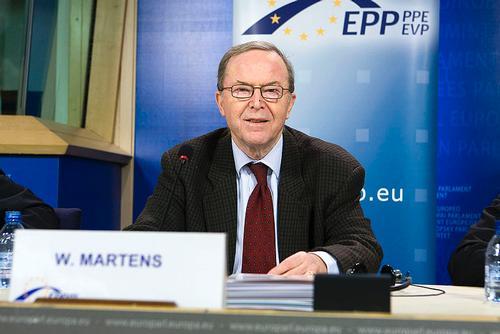
In the 1970s, Belgium was also affected by the international economic crisis and the outdated economy was settled. Restructuring of the textile, coal and steel industries was badly needed.
The closure of many companies and the loss of thousands of jobs was taken for granted. Unemployment grew from 3.4% in 1972 to 18.5% in 1983 in just over a decade. This in turn led to major budget deficits and a massive increase in government debt.
The center-right governments-Martens pursued a strict restructuring policy from 1982 to contain the budget deficit and that policy started to bear fruit in the late 1980s: the budget deficit could be reduced and unemployment started to fall, partly thanks to the reviving business cycle.
From 1970, politics was mainly dominated by state reform. Economic decentralization followed and a constitutional revision brought an end to unitary Belgium. Belgium was divided into four language areas, three cultural communities and three regions. However, the whole of the state reform failed in October 1978 on Flemish resistance and constitutional objections from the CVP, Martens' party.
1980-2000
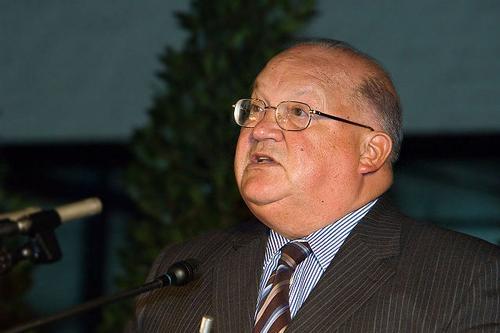
In 1980, the new constitutional reform was implemented under the six-party cabinet of Wilfried Martens. This broadened community autonomy and brought about regionalization. Disagreements persisted only over the Brussels statute. It soon became apparent that the state reform had many snags. Problems arose about state aid to Walloon steel companies in particular and the language skills of political figures in the Flemish facility governments. In the autumn of 1987, the issue of Mayor José Happart van Voeren led to the resignation of the cabinet and the longest government crisis in Belgian history, namely from December 1988 to May 1989. All this was more or less the signal for the further reform of bring the state forward. A new constitutional amendment in 1988 gave the regions, communities and urban region of Brussels even more autonomy and financial freedoms. The parliamentary elections caused major shifts in the Belgian political world. All major parties lost seats and the profit went to the far-right Vlaams Blok in Flanders and to the environmental party Ecolo in Wallonia.
Prime Minister Martens was succeeded by Christian Democrat Jean-Luc Dehaene who formed a Roman-red cabinet in 1992. Dehaene's main goal was to reduce the excessive government debt. Other spearheads of this government were the restructuring of the national budget, the reduction of unemployment and the reform of social security. The budget deficit (1.3%) was reduced in 1998 to such an extent that Belgium was included in the European Monetary Union (EMU).
After a constitutional reform in 1993, Belgium became a real federal state and the powers of state, communities and regions were officially established. The federal bicameral system was also reformed and direct elections to regional parliaments were held. The Brussels-Capital Region received its status in 1989. On July 31, 1993, King Baudouin died and was succeeded by his brother, Albert II.
In the parliamentary elections of June 13, 1999, the government parties suffered a major defeat. These elections were dominated by a dioxin crisis that broke out just before the elections. On May 27, it was announced that chickens and eggs had become contaminated with dioxin through animal feed. As it later turned out that the responsible ministers had known about the problems for a long time, a heavy election defeat of the government parties was obvious.
The CVP suffered the largest losses and the largest fraction now became the Flemish Liberals and Democrats (VLD). The biggest winners were of course the green parties Ecolo in Wallonia and Agalev in Flanders. The far-right Vlaams Blok also won in Flanders, although not as much as expected. The day after the elections, Prime Minister Dehaene offered the resignation of his cabinet and was no longer available for the next government period. Guy Verhofstadt, the later prime minister and chairman of the VLD, was appointed formator and created a government of liberals, socialists and greens. For the first time since 1958, the government ruled without the CVP.
During the Kosovo crisis in 1999, 600 Belgian para-commandos took part in Allied Harbor, NATO's operation to protect Kosovar refugees in Albania. In the same year, 1,100 troops left for Kosovo to participate in KFOR, the NATO peacekeeping force for Kosovo.
In December 1999, the Verhofstadt government announced that it would pursue an active foreign policy again, particularly in Central Africa, where the old colony of Belgium, Congo, is located. As soon as there would be peace in the region, Belgium would endeavor to support the reconstruction politically and financially.
On December 4, 1999, crown prince Filip married Mathilde d'Udekem d'Acoz, who from that day is entitled "princess of Belgium".
The euro was introduced on 1 January 1999 and the franc was completely replaced by the euro from 1 January 2002.
21th Century
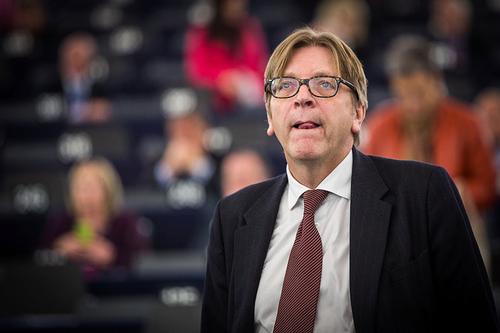 Guy Verhofstadt BelgiumPhoto: Claude Truong-Ngoc / Wikimedia Commons - cc-by-sa-3.0
Guy Verhofstadt BelgiumPhoto: Claude Truong-Ngoc / Wikimedia Commons - cc-by-sa-3.0
The big winner in the elections of May 18, 2003 were the socialists, big losers the greens, after which a purple coalition of liberals and socialists (VLD, MR, SP.A and PS), again led by Verhofstadt, took office on 12 July. The Greens disappeared from the federal government (and also from the federal parliament).
The new government has an ambitious domestic program, which aims, among other things, to create 200,000 new jobs during the government period. The previously initiated administrative reforms will also continue, with a special focus on improving the judicial system and the police. However, the Copernicus reforms, introduced by Verhofstadt I for the renovation of the civil service, transforming the former system of ministries into federal public services (fods), have largely been reversed. The government has also made an exception to the ban on tobacco advertising for the Francorchamps race track in hopes of regaining the Belgian Grand Prix.
Responsibility for arms exports has been delegated to the regions, in the interest of the Walloon arms industry in particular. After a long discussion about the introduction of migrant voting rights (VLD against, the other three coalition partners in favor), this was introduced in February (at the local level). Verhofstadt II is generally regarded as less stable than Verhofstadt I. The next federal elections are scheduled for July 13, 2007. Federal and regional elections are no longer held at the same time. The last regional elections took place on June 13, 2004. As a result of these elections, the Belgian political system has an asymmetrical composition for the first time since the regions were created. This means that a different coalition rules at the regional level than at the federal level. In the current situation, the Flemish Christian Democrats (CD & V) are governing party at regional level, but opposition party at federal level. Obviously, such an asymmetry puts (even more) stress on political relations in Belgium.
In the last regional elections of June 13, 2004, the right-wing nationalist Vlaams Belang (formerly: Vlaams Blok) continued its electoral growth. After the CD & V / NV-A cartel, VB is the largest party in Flanders. The VB has never got around to management. The cordon sanitaire - the traditional Flemish parties have so far boycotted any coalition with the Belang - has prevented this for the time being. However, the question is how long the cordon can be kept as long as the VB continues to grow.
Municipal elections are taking place in October 2006 in Belgium, parties across the spectrum have polarized election programs that make the political tensions between them more tangible. The municipal elections are seen as an indication of the outcome of the national elections of 2007.
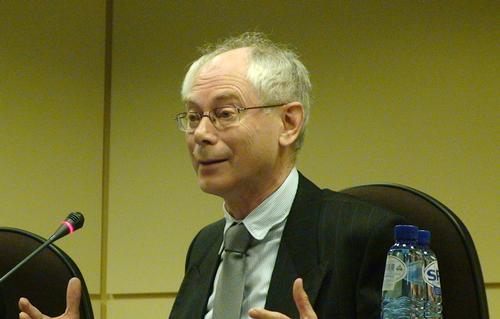
After the elections of June 10, 2007, Didier Reynders and Jean-Luc Dehaene were successively appointed as informateurs. Both failed in their assignment due to the community stalemate and the difficult relationship of Joëlle Milquet's CDH with Didier Reynders' MR. The Flemish demand for further state reform and an unconditional split of the electoral district of Brussels-Halle-Vilvoorde made the task of formator Yves Leterme particularly difficult. On Thursday, August 23, 2007, the formator offered his resignation to King Albert, who accepted it. On 29 August 2007, after talking to several ministers of state, the king designated CD&V Herman Van Rompuy as 'scout' to demine the community field and to bring government negotiations out of the doldrums. At the end of September, Yves Leterme became a formateur for the third time, but at the beginning of November his formation attempts were definitively wiped off, because CDH leader Joelle Milquet refused to answer Leterme's ultimate 3 questions to continue with the negotiations.
The unilateral approval of the split of Brussels-Halle-Vilvoorde earlier that month by the Flemish politicians in the Parliamentary Committee had done no good, nor had the subsequent alarm bell procedure invoked by the Walloons due to a conflict of interest. Following Leterme's resignation, Prime Minister Guy Verhofstadt came up again in December, who set up a new interim government just before Christmas until March 23 with Christian Democrats, Liberals and Socialists. This Christmas cabinet consists of 7 Flemish ministers (including the prime minister, Guy Verhofstadt) and 7 Walloon ministers. In March 2008, the crisis will come to an end and a cabinet will be headed by Yves Leterme. In the fall of 2008 it is already over with peace and Leterme falls on the Fortis issue, he has tried to influence the lawsuit over the bank deal. In December 2008, the Royal Scout ex-Prime Minister Martens tries to persuade the parties to continue with the same parties, but with a new Prime Minister. On January 2, 2009, the new government is appointed with Prime Minister Herman Van Rompuy. In November 2009, van Rompuy becomes the new President of the European Council. Leterme returns as prime minister. After an argument about the Flemish-Walloon issue, the cabinet falls in April 2010. In the elections of June 2010, the Flemish alliance becomes the largest party in Flanders and the socialists win in Wallonia. Ellio de Rupo became Prime Minister in December 2011 after a record time (541 days) without government.
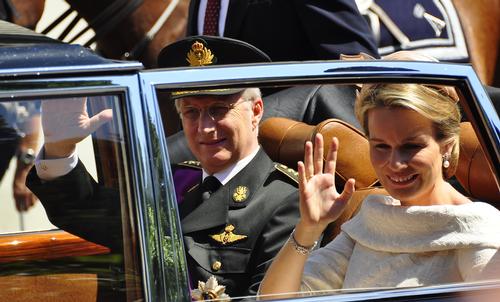 King Philippe and Queen Mathilde BelgiumPhoto: Michael Thaidigsmann CC 3.0 Unported no changes made
King Philippe and Queen Mathilde BelgiumPhoto: Michael Thaidigsmann CC 3.0 Unported no changes made
In July 2013, King Albert II abdicated in favor of his son Philipe. In May 2014, the N-VA becomes the separatist Flemish party the largest in Flanders and the king asks its leader to look into the possibilities of forming a new government. In October 2014, Charles Michel forms a new coalition government. In 2015, the security level will be tightened in response to a threat from the Islamic State. In March 2016, Brussels was nevertheless startled by attacks on Zaveltem and in Brussels itself, where a total of 35 deaths were to be regretted. In the elections of 26 May 2019, the N-VA received 16% of the votes, Vlaams Belang 12% and Parti Socialiste became the third party with 9.5%. Since then, a formation has been going on and Belgium has been led by a resignation cabinet. This was initially led by Prime Minister Michel. Since he was appointed President of the European Council, Michel was succeeded in October 2019 by the first female Belgian Prime Minister: Sophie Wilmès.
Finance Minister De Croo took over in October 2020 from an interim government led by Sophie Wilmès, who now serves as foreign minister.Mr De Croo, a liberal Flemish politician, has been a deputy prime minister with various responsibilities since 2012.He heads a seven-party coalition of liberals, socialists, greens and Christian democrats.
Sources
Belgium, a way of life
Lannoo
European Union: fifteen country documents
European Platform for Dutch Education
The Stateman's Yearbook: the politics, cultures and economies of the world
Macmillan Press Limited
CIA - World Factbook
BBC - Country Profiles
Last updated June 2025Copyright: Team The World of Info